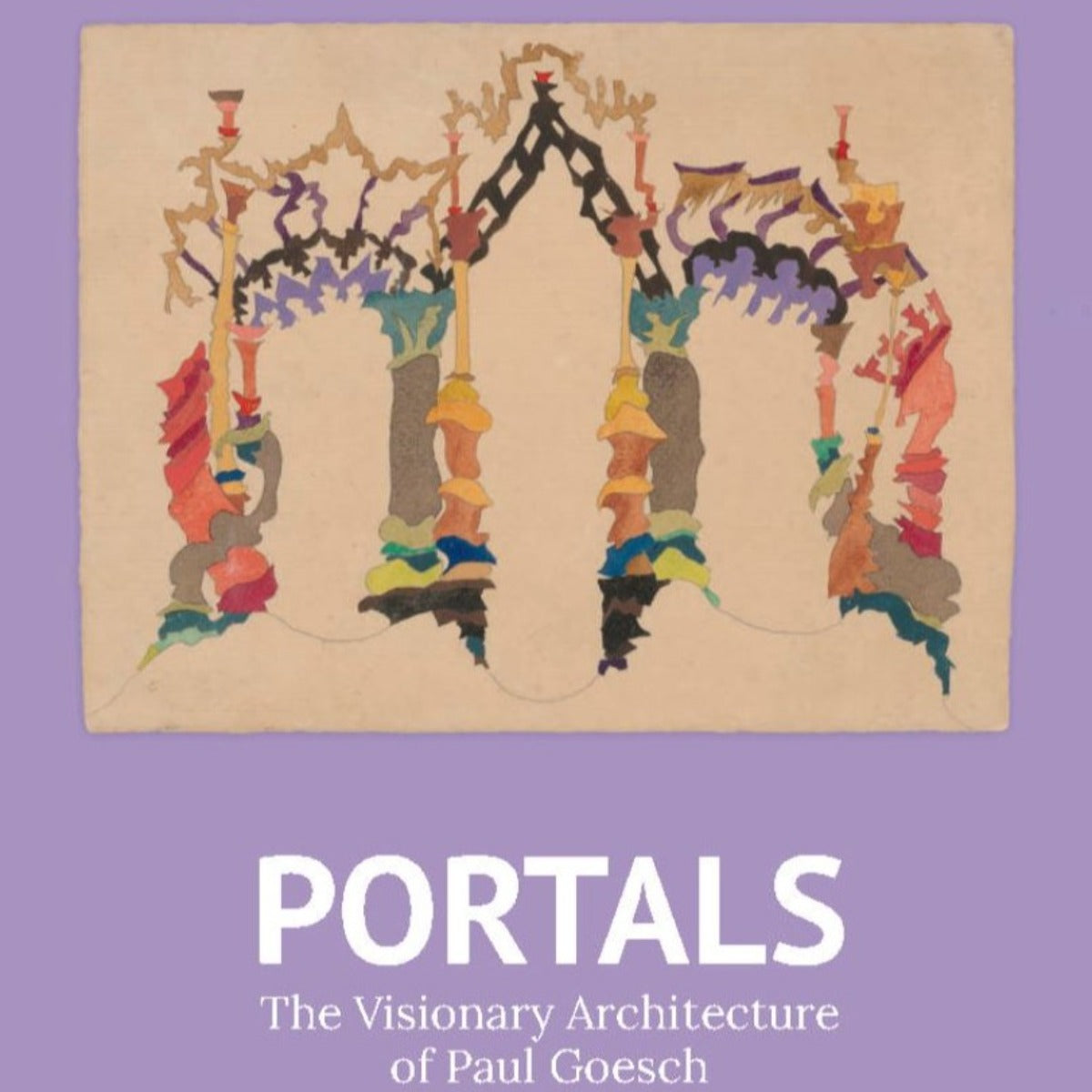
PORTALS: THE VISIONARY ARCHITECTURE OF PAUL GOESCH
Edited by Robert Wiesenberger and Raphael Koenig
Paul Goesch (1885–1940) produced one of the most inventive, peculiar, and poignant bodies of work to emerge from Weimar Germany. An artist and architect, he made both fanciful figurative drawings and visionary architectural designs. The latter, from the extensive holdings of the Centre for Canadian Architecture in Montreal, are the focus of this publication, the first in English dedicated to Goesch.
Amid the aftermath of First World War, a generation of young architects sketched their visions for utopia. Goesch stands out among them for his formal range, his kaleidoscopic color sense, and his playful and pluralistic embrace of architectural history, as well as for his long struggles with schizophrenia, a condition for which he was institutionalized and ultimately murdered by the Nazis.
This publication highlights the decorative portals and archways that predominate in Goesch’s work. These represent the artist’s metaphysical passages, as a spiritualist steeped in diverse religious and esoteric beliefs, and his altered psychological states. They also suggest Goesch’s liminal status between art and architecture, “sanity” and “madness,” the trained insider and the institutionalized “outsider.” Celebrated in his time and since forgotten, Goesch is presented here in the context of period discussions on art, architecture, and mental health.
Robert Wiesenberger is curator of contemporary projects at the Clark Art Institute and lecturer in the Williams Graduate Program in the History of Art in Williamstown, MA. Raphael Koenig is visiting assistant professor (ATER) in Comparative Literature at the University of Toulouse II and associate researcher at the University of Toulouse II’s Literature, Languages and Visual Arts Research Unit.
104 pages, 8 x 10
46 color illustrations

